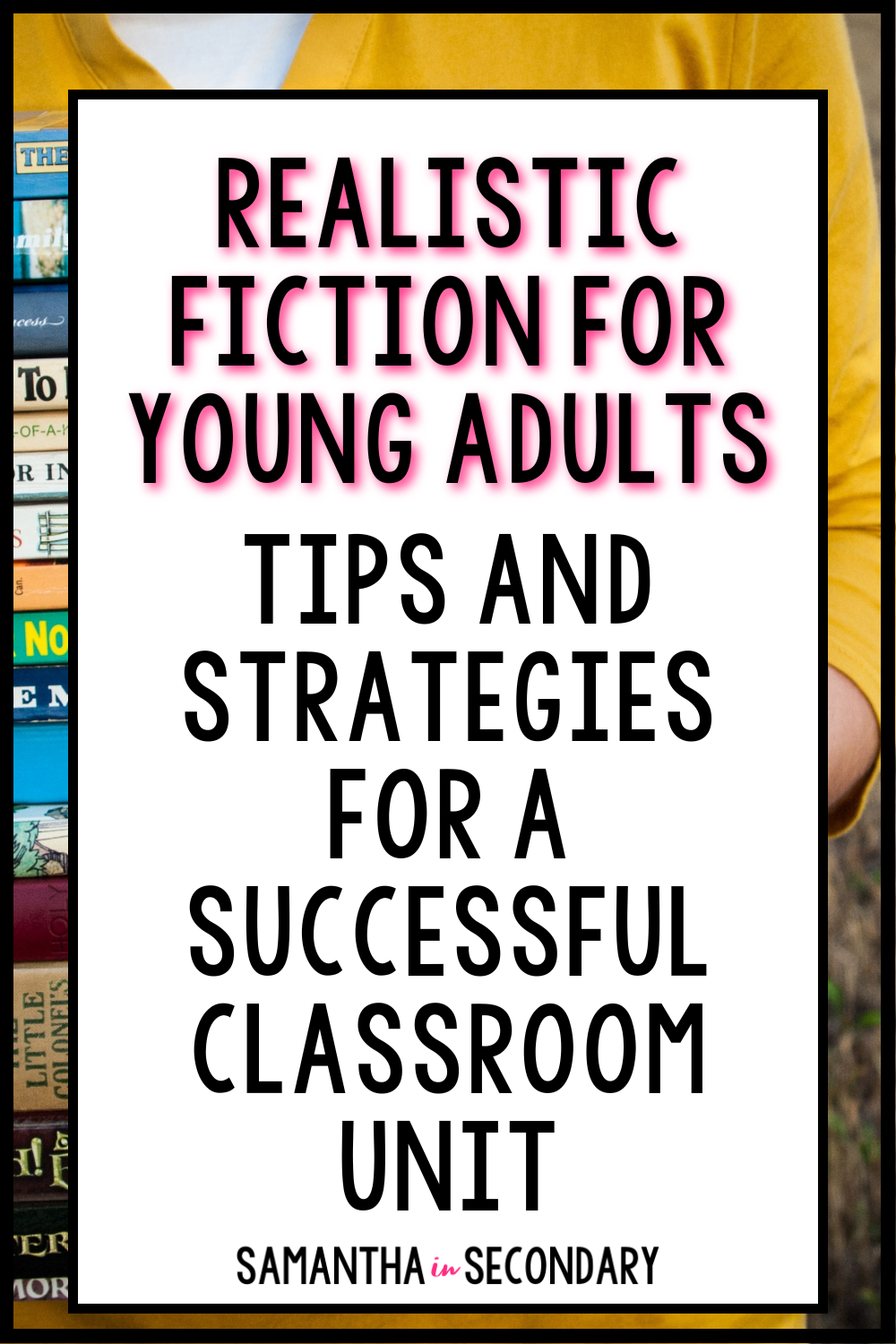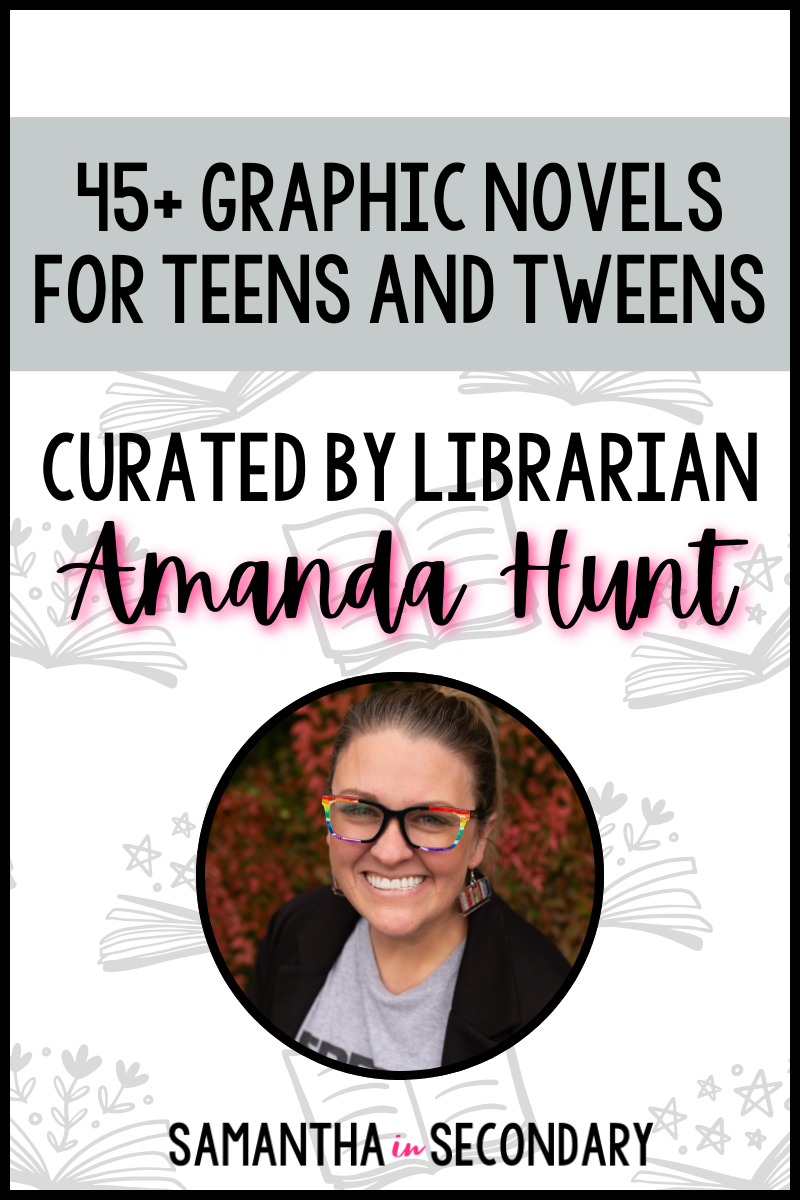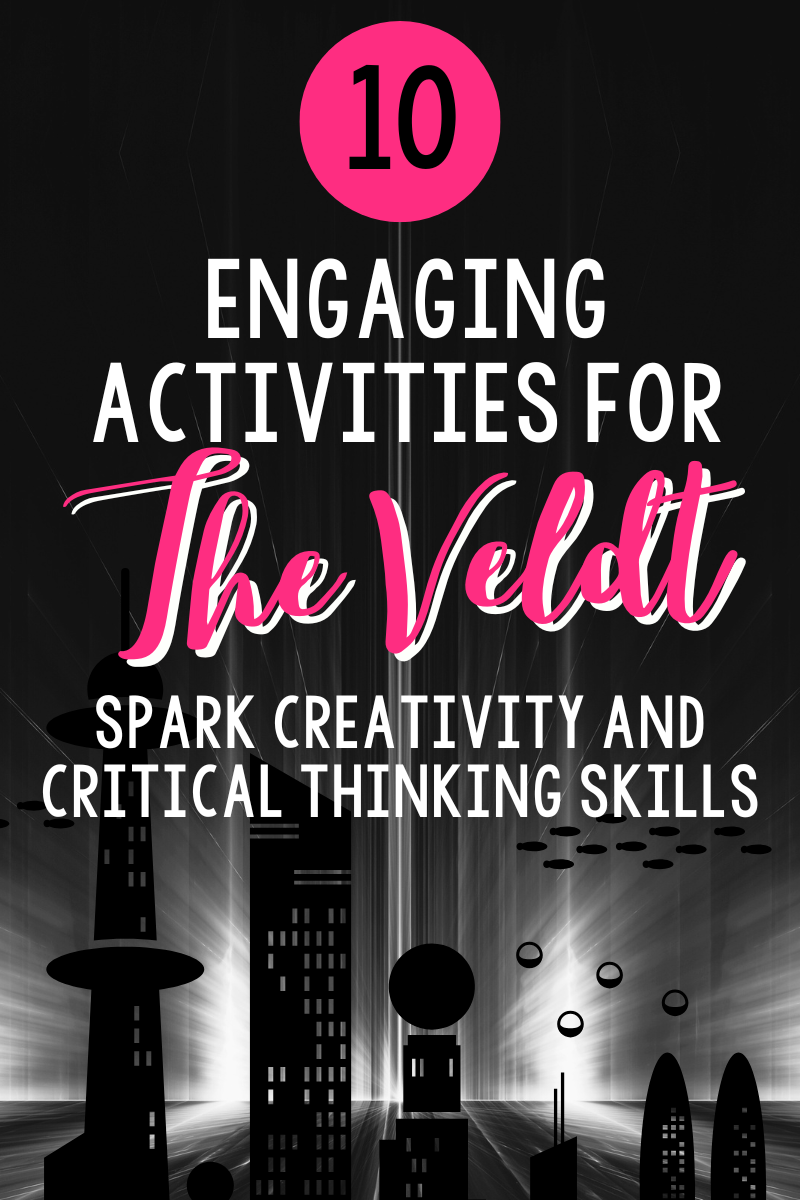Mystery remains one of the strongest selling genres in book sales today, so introducing your students to this genre through literature circles is an easy way to enhance your mystery unit and add some meaningful learning opportunities into your classroom to help to create lifelong readers.
Adding a genre-based choice reading mystery unit to your ELA classroom increases engagement and gives students a chance to explore this popular literary style. Through literature circles, students can engage in active reading and discussion around topics such as cause and effect, summaries, plot development, characterization, suspense, problem solving strategies, and so much more. The mystery genre provides a perfect springboard to dissect plenty of related literary topics.
In this blog post, I’m going to walk you through exactly how to create an effective structure for your own mystery unit using choice reading as the primary method, as well as plenty of activity ideas to incorporate for a fun and rigorous literature circle experience.
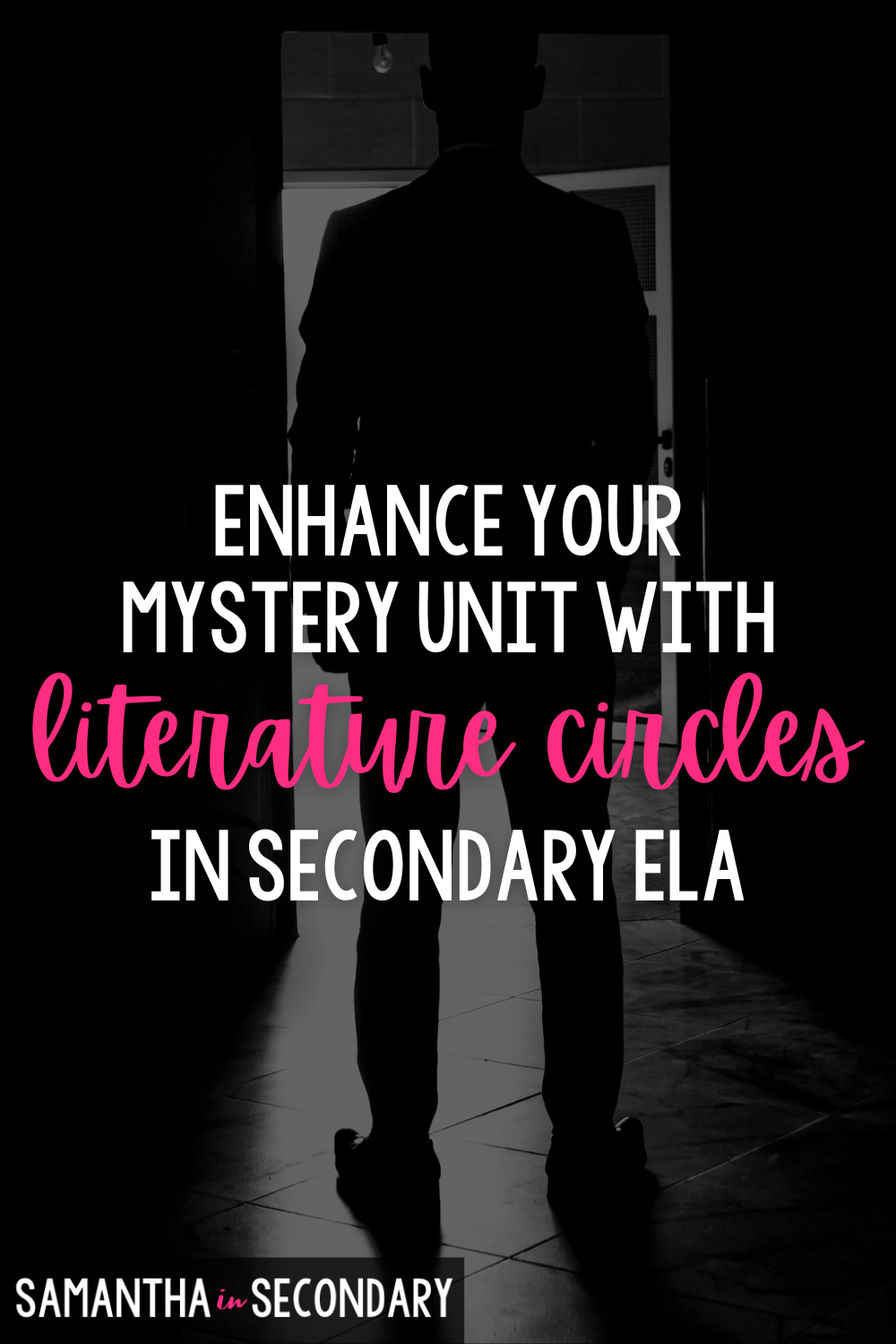
#1: Introduce the Mystery Genre
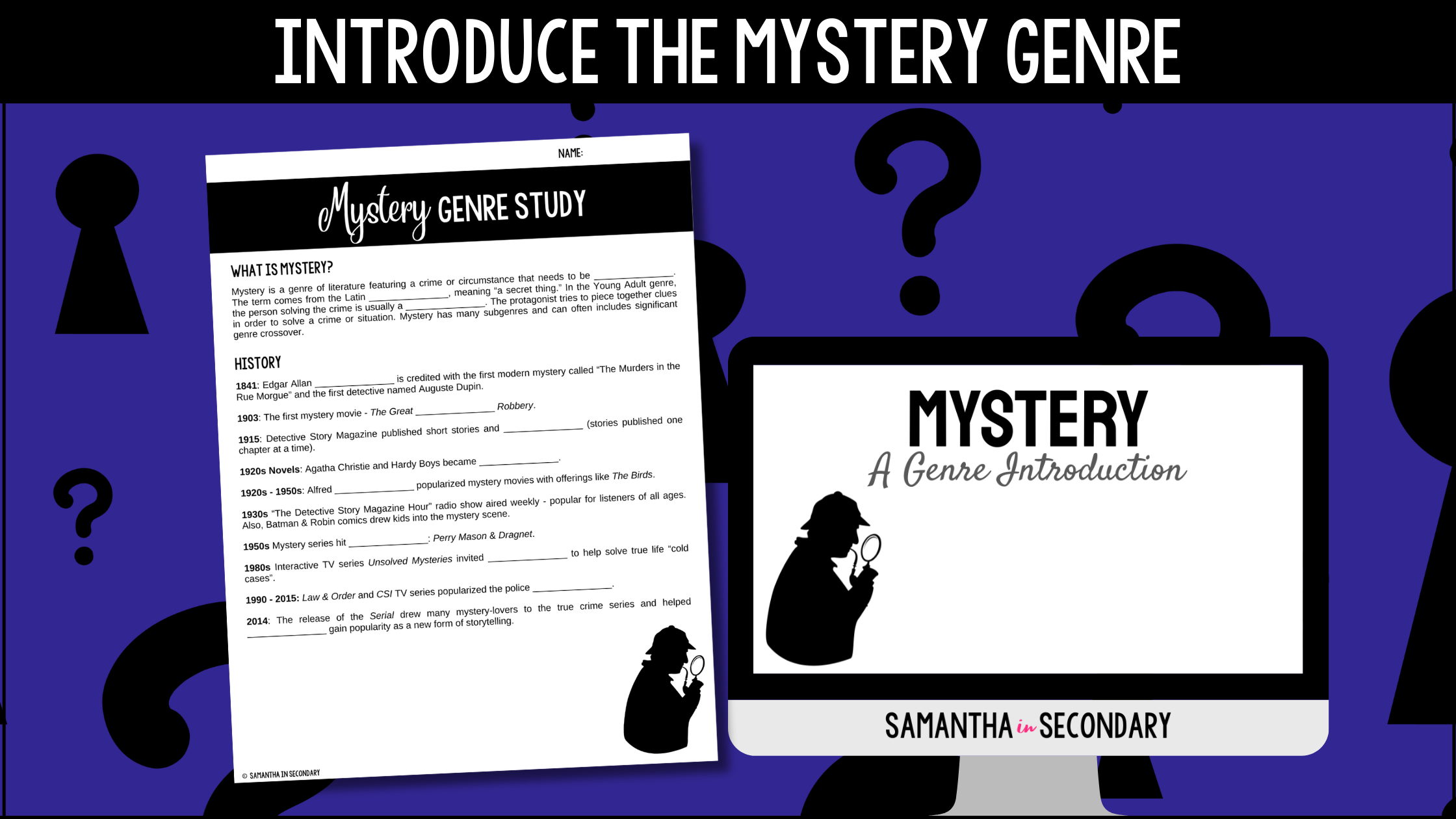
The first step in creating an engaging mystery unit is to ensure students have a solid understanding of the genre. While many students may have a general idea of what mystery entails, diving into the key elements and subgenres can deepen their appreciation and set the stage for meaningful exploration. Teach them the essentials—think clues, red herrings, and suspense—and introduce the wide variety of subgenres, from classic whodunits to psychological thrillers and cozy mysteries.
To make this introduction interactive and fun, I like to use snippets from novels or short synopses for students to analyze. They work to match each description to its appropriate subgenre, which not only reinforces their understanding but also gives them a glimpse of the diversity within the genre. It’s an engaging way to spark curiosity and excitement for the unit ahead.
If you’re looking to save time, I’ve got you covered with a done-for-you Mystery Unit Introduction that includes this subgenre activity and more. It’s ready to print and use, making it easy to launch your mystery unit with confidence and creativity. With everything prepped and ready to go, you’ll be free to focus on building anticipation and guiding your students into the intriguing world of mystery
#2: Incorporate a Related Literary Element
When I run a mystery unit, I always choose a specific literary element to emphasize during the lessons. While we certainly discuss a variety of literary elements throughout the unit, having one focal point helps anchor the discussions and gives students a deeper understanding of how that element shapes the genre. In mystery, the standout literary element is plot—it’s the backbone of the story, driving the suspense, twists, and ultimate resolution that define the genre.
To set students up for success, make sure they thoroughly understand how a plot works. This includes revisiting the basic structure—exposition, rising action, climax, falling action, and resolution—and diving into specific elements like red herrings, foreshadowing, and cliffhangers that are unique to mystery. I find that starting with a plot mini-lesson gives students a solid foundation before they start reading and analyzing texts. If you’d like a ready-made option, you can grab my Plot Mini-Lesson here. It’s designed to refresh students’ knowledge while introducing the nuances of plot, setting the stage for engaging and insightful discussions.
#3: Time to Choose Books for the Mystery Unit!
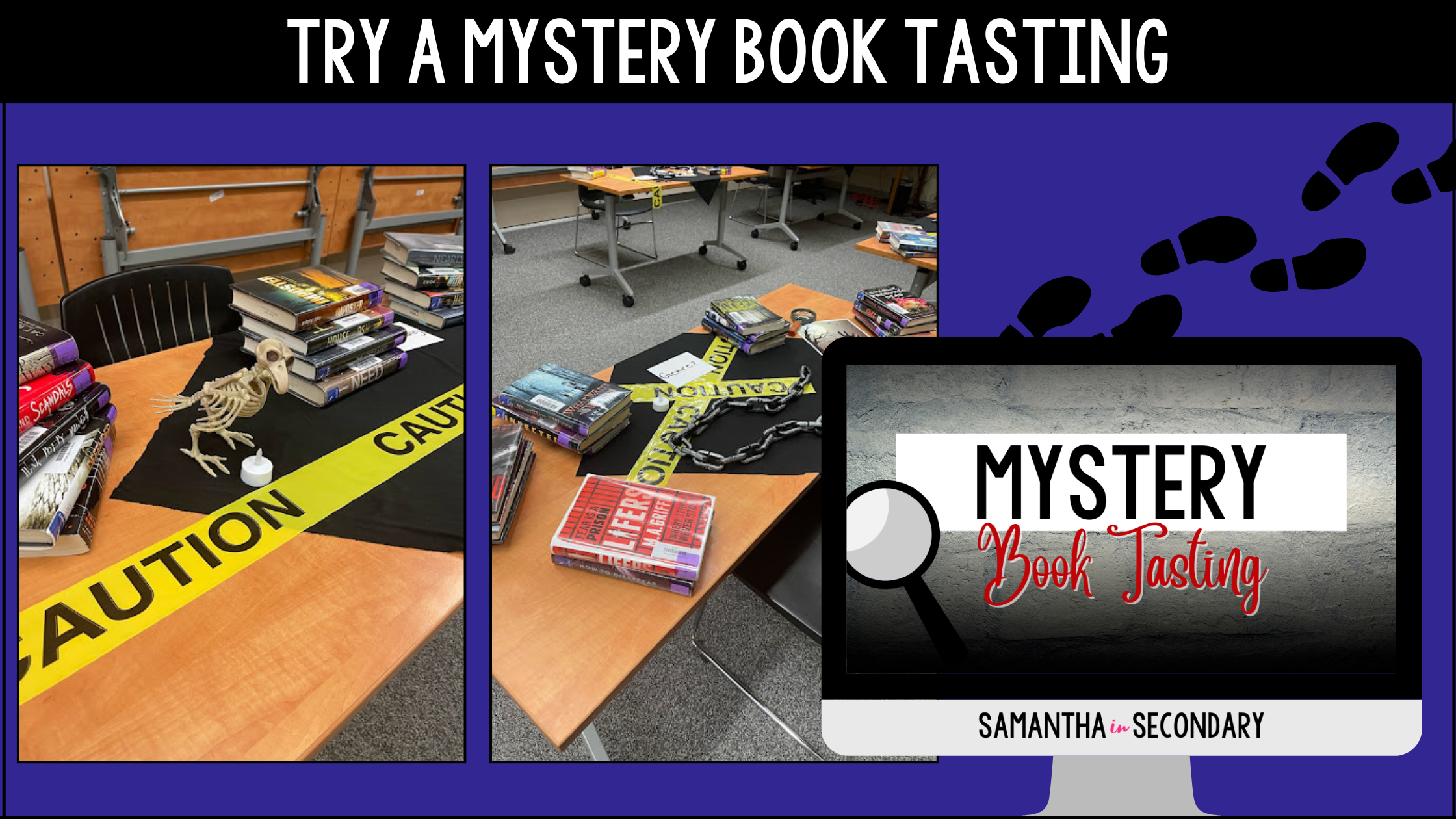
Helping students choose books for a choice reading unit can be both exciting and a bit challenging, but there are plenty of creative ways to guide them toward finding a story they’ll love. While there are many strategies to explore, one of my absolute favorites is hosting a mystery book tasting. This engaging activity turns book selection into a hands-on, interactive experience that sparks curiosity and excitement for the mystery genre.
A book tasting allows students to “sample” a variety of mystery books, giving them the chance to explore different subgenres, authors, and themes before committing to a choice. It’s an excellent way to introduce a wide range of options while creating a fun, low-pressure environment for students to find their perfect match. If you’d like to see how I organize and run a mystery book tasting step-by-step, click here for all the details and resources you need to set up your own!
#4: Dig In to the Genre
Give your students genre-specific questions to consider when reading their books. I like to create a discussion guide for each of my genre studies that includes questions such as:
- What element of plot do you believe had the biggest impact on the story overall?
- Which elements of mystery were present in your novel?
- Which subgenre of mystery does your novel fall under?
Have your students create their own questions as well. This way, when you come together as a class (or in small groups) to discuss the reading, students are bringing their own material, too.
Want to use my discussion guide? Click here and save your time.
#5: Create a Mystery-Themed Project
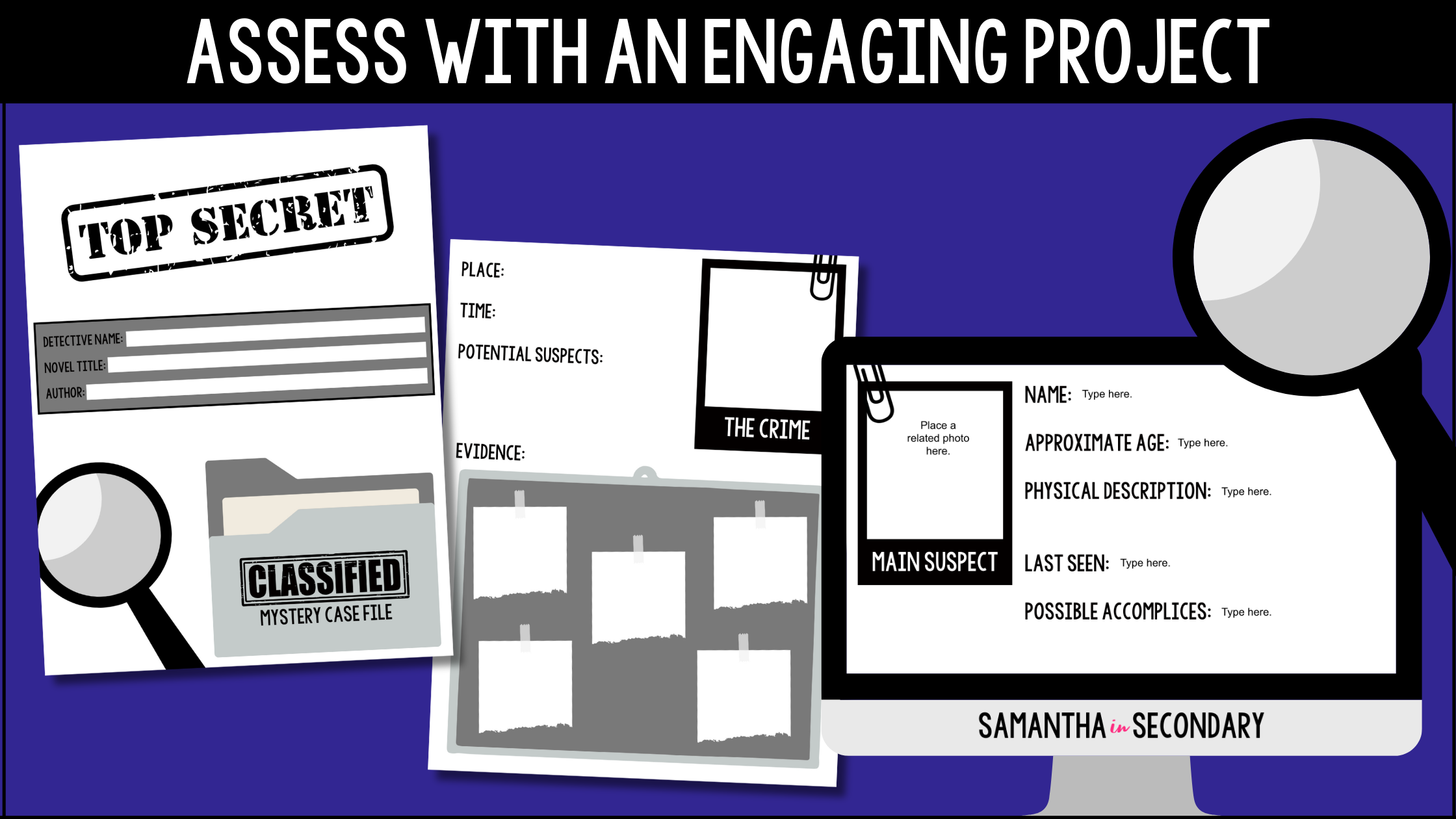
I love giving my students the opportunity to create a mystery-themed project for their choice novels. It’s a fantastic way to encourage deeper engagement with the text while allowing them to showcase their understanding of key elements like suspects, the crime, evidence, and more. By focusing on these critical details, students not only reinforce their comprehension but also practice skills like analysis, citation, and synthesis.
My favorite approach to this is a Case File Project. In this activity, students take on the role of a detective, crafting a detailed case file for the crime in their novel. They’ll include essential components like suspect profiles, descriptions of the crime scene, and evidence logs, all backed by specific textual evidence. This hands-on project challenges students to think critically about the story’s structure while demonstrating their ability to connect plot points and character actions to the overarching mystery.
What makes this project so rewarding is how it reveals who truly grasped the inner workings of their novel. As students piece together their case files, you can clearly see their depth of understanding and their ability to analyze how each element of the story contributes to the mystery. Plus, the creative aspect of the project keeps students engaged and excited, making it a win-win for any mystery unit.
#6: Reflect on the Literature Circles
Have students take some time to reflect on their experience with the choice reading unit. Your students can complete a self-evaluation in the categories of preparation, speaking, listening, and discussion norms. This can help them reflect on what they did well and what they can do better during future units.
Already Teaching Mystery? This Unit Is Still For You!
If you’re already running a mystery unit in your classroom—perhaps teaching a required text like And Then There Were None or The Westing Game—this resource can still be an excellent addition to your plans. Choice reading can run alongside your main unit, offering students the opportunity to explore other mystery titles that align with their interests while still engaging with the genre as a whole. Alternatively, these resources can serve as a perfect complement to your existing unit, providing activities that reinforce key skills like plot analysis, character development, and theme exploration. Whether you use them to extend your current lessons or to give students additional options, this resource is flexible enough to fit seamlessly into your curriculum while enhancing the mystery experience for your students.
Grab My Done-For-You Unit!
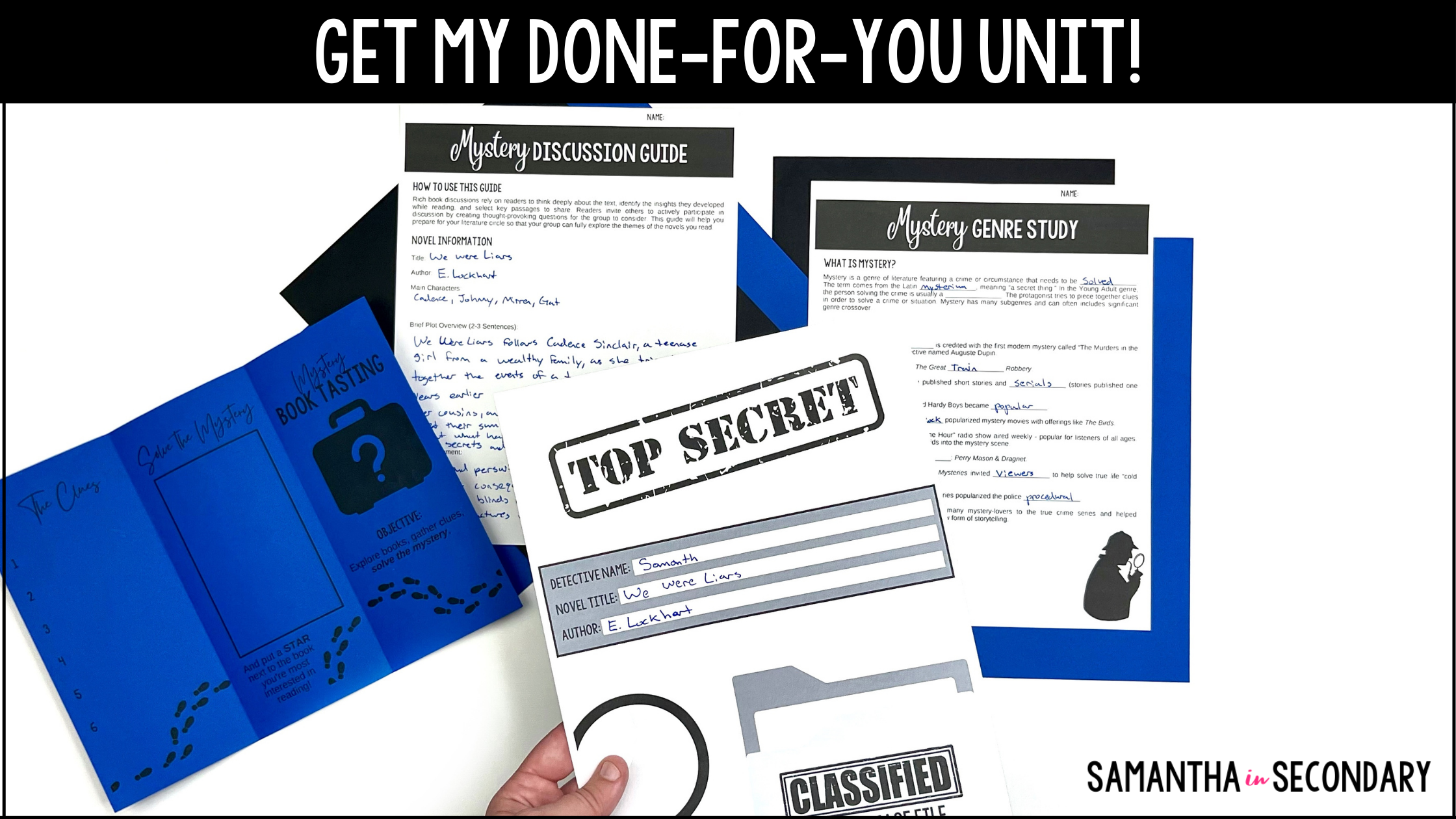
Want to run your own mystery genre-based literature circles but don’t have the time to plan every detail? Don’t worry—I’ve got you covered! My comprehensive mystery unit has everything you need to implement an engaging, choice-driven reading experience that your students will love. Whether you’re introducing independent reading, book clubs, or literature circles, this ready-to-go resource is designed to help you dive into the mystery genre tomorrow.
This unit includes everything from a full genre introduction and themed book tasting to scaffolded discussion guides and a creative mystery case file project. It’s flexible enough to complement your existing curriculum or stand alone as an engaging, choice-based unit. Plus, the included pacing guide ensures smooth implementation, so you can focus on guiding your students as they uncover the secrets of this exciting genre.
With two free bundle bonuses—a Plot Mini-Lesson and a Mystery Roll-a-Story Creative Writing Assignment—this resource makes it easy to inspire and support your students’ love for mysteries. Ready to save time and start planning your mystery literature circles? Click here to check it out!
The mystery genre is a captivating way to ignite your students’ curiosity and strengthen their analysis and comprehension skills. With thoughtful planning and dynamic activities tailored to each part of the unit, your classroom can come alive with the intrigue and excitement that mysteries provide. From unraveling plot twists to analyzing character motives, your students will be fully immersed in the world of sleuthing and storytelling.
Mystery-based literature circles offer a powerful way to encourage collaboration, spark meaningful discussions, and help students dig deeper into the text to unearth its secrets. They create an engaging learning environment where critical thinking and creativity thrive. So, why not channel your inner detective and invite Sherlock Holmes—or any beloved mystery figure—into your classroom?
With the right resources and a touch of imagination, you can make literature more intriguing than ever. Start your own mystery-themed literature circles today, and watch your students become passionate readers and analytical thinkers as they solve the mysteries within the pages of their books.
Happy teaching!








